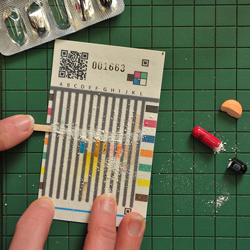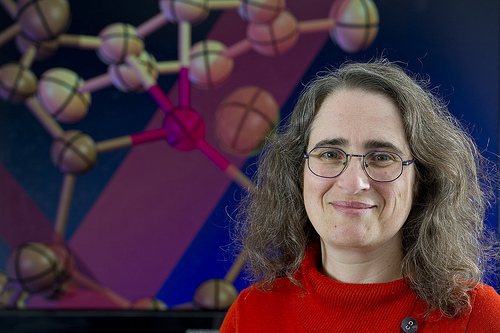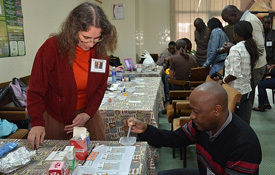

Marya Lieberman
Marya Lieberman, associate professor of chemistry and biochemistry, presented “Finding Fake Drugs: Bringing Chemistry Out of the Lab and into the World” at the South Bend Science Café in downtown South Bend on Oct. 14. Over 100 people from the Notre Dame and the community attended the event. This was the second event in a monthly series organized by town leaders and the Reilly Center for Science, Technology, and Values, where Lieberman is a Fellow.
Lieberman discussed her low-cost, low-tech, paper analytic devices (PADs) for detecting counterfeit or substandard pharmaceuticals. PADs are especially beneficial in developing countries where pharmaceutical regulation is lacking and sophisticated testing equipment out of reach. “You don’t realize what the government does for you until you go somewhere where the government isn’t providing the same service,” said Lieberman, who has worked for three years in Kenya, where average income is less than $2 a day. “They don’t have a lot of fancy instrumentation, and they don’t have a lot of government regulations. They have a big problem with low-quality pharmaceuticals.”

Lieberman gives a demonstration
of the PADs in Kenya

Low-quality drugs, including those without the specified quantity of active ingredient or those that substitute cheaper ingredients, not only fail to heal but could be fatal to people with allergies. For example, Lieberman said physicians in Southeast Asia discovered a decade ago that 40 to 80 percent of antimalarial drugs for sale were fakes that contained less than four percent of the active ingredient. “It’s a problem because there is no global program to test pharmaceutical products,” she said.
To solve the problem, Lieberman developed test cards that can be printed on a commercial printer and have reaction lanes that can differentiate more than 25 different pharmaceuticals.
The test is very simple to use – it requires scraping the drug across the paper and placing it in water where chemicals mix and indicate the drug present by a color code.
Lieberman’s work was recently profiled in one of the University’s “What Would You Fight For?” commercials that aired on NBC during the Notre Dame vs. Oklahoma game on Sept. 28. She will also give another talk about the PAD project as part of the Science Exploration Series on Saturday, Oct. 19 at 4:00 p.m. in 101 Jordan Hall of Science. The presentation is free and open to the public.
The Science Café meets at 6:00 p.m. on the second Monday of each month at Chicory Café in downtown South Bend.